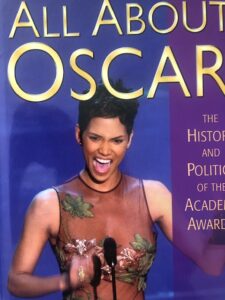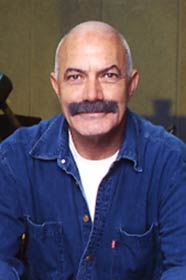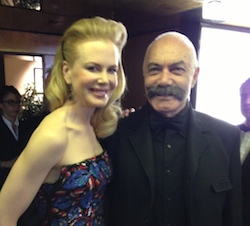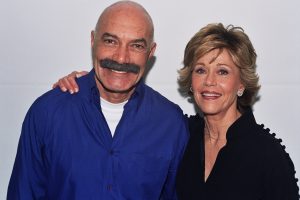Agnes Moorehead played the role in radio to great acclaim in 1943, but she was not a star and so when the play was made into a Hollywood picture, Stanwyck, then at the prime of her career, was cast in the lead.
In a tour-de-force, Oscar Nominated performance, Stanwyck plays Leona Stevenson, a whining, paranoid, hypochondriac New York heiress, who has developed a psychosomatic illness that has made her a bed-ridden invalid. Leona lives in an upscale apartment with her milquetoast husband Henry (Burt Lancaster), but her only contact with the outside world is through the telephone.
One evening, while trying to reach Henry at the office, she overhears two men making plans for a murder. She tries to contact Henry, then the police, then the phone company, to warn them of the impending crime not realizing she is the intended victim. The clock is ticking fast: Time is running out and the murder’s hour is approaching.
The film’s title is also the last line of the dialogue. A gimmicky, stylized movie, it has a nice premise extended to the requirement of a feature length movie. To open up the theatrical one-set property, and prolong the running time, much of the story is told through flashbacks.
A prisoner in her own home, the invalid Leone is utterly helpless, desperately looking out of her window on a crowded but impersonal and indifferent urban milieu.
Anatole Livak, who also produced, directs with an assured hand a taut, supremely crafted film that benefits from the lensing of ace Sol Polito, who uses all the vocabulary of film noir; the film has become a test case for the genre.
The good, largely male cast includes Burt Lancaster in a supporting role, Wendell Corey, Ed Begley, Leif Erickson, and others.
A word about the score: On the radio, we often hear Shubert’s famous Unfinished Symphony, music that was used in at least two other great film noir: Billy Wilder’s Double Indemnity and Robert Aldrich’s Kiss Me Deadly.
Spoiler Alert
Both Leone and Henry are destroyed, a result of their fate as well as personalities. This twist ending is often cited as one of the era’s most memorable.
Oscar Alert
Best Actress: Barbara Stanwyck
Oscar Context
This was the last of four Best Actress Oscar nominations for Stanwyck, who never won a competitive Oscar. In 1981, she received an Honorary Oscar as a compensation for four failures, handed to her by no other than her co-star William Holden in “Golden Boy” (his first feature). Stanwyck’s citation read: “For superlative creativity and unique contribution to the art of screen acting.”
In 1948, Stanwyck competed for the Best Actress Oscar with Jane Wyman, who won for playing a deaf-mute girl in the melodrama “Johnny Belinda,” Ingrid Bergman in “Joan of Arc,” Olivia de Havilland in “The Snake Pit,” and Irene Dunne in “I Remember Mama.”
Recycling: Broadcast history
The play was performed seven more times, in 1944, 1945, 1948, 1952, 1957 and 1960. The final broadcast was on February 14, 1960. Orson Welles called Sorry, Wrong Number “the greatest single radio script ever written.” In 2014, the broadcast was deemed “culturally, historically, or aesthetically significant,” and selected for inclusion in the National Recording Registry.
Barbara Stanwyck as Leona Stevenson
Burt Lancaster as Henry J. Stevenson
Ann Richards as Sally Hunt Lord
Wendell Corey as Dr. Philip Alexander
Harold Vermilyea as Waldo Evans
Ed Begley as James Cotterell
Leif Erickson as Fred Lord
William Conrad as Morano
John Bromfield as Joe – Detective
Jimmy Hunt as Peter Lord
Dorothy Neumann as Elizabeth Jennings
Paul Fierro as Harpootlian
Credits:
Directed by Anatole Litvak
Screenplay by Lucille Fletcher
Based on Sorry, Wrong Number
by Lucille Fletcher
Produced by Litvak, Hal B. Wallis
Cinematography Sol Polito
Edited by Warren Low
Music by Franz Waxman
Production company: Hal Wallis Productions
Distributed by Paramount Pictures
Release date: September 1, 1948
Running time: 89 minutes
Box office $2.8 million (U.S. rentals)












